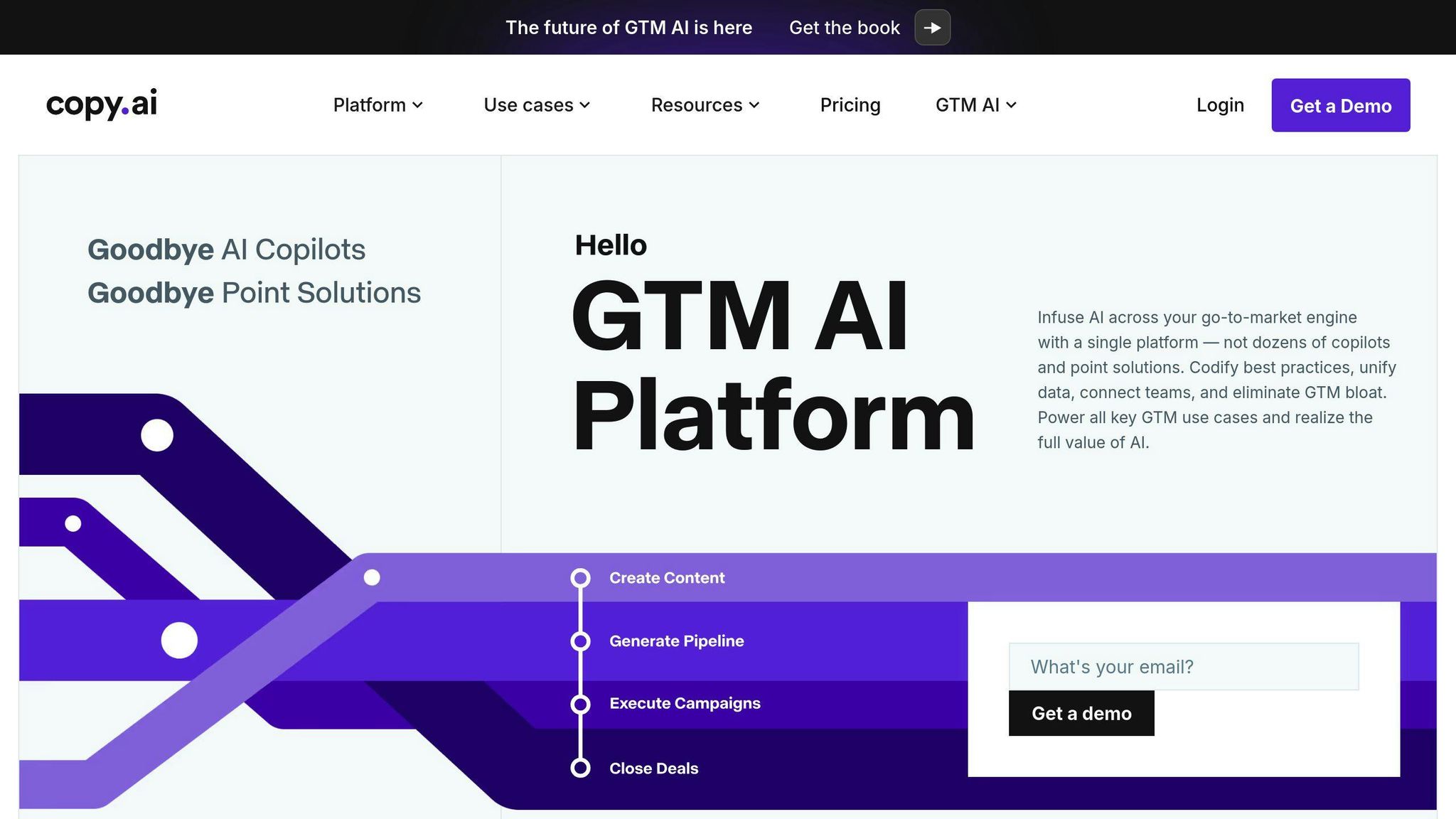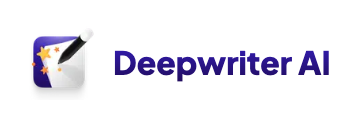AI tools like Deepwriter AI are changing how writers create content by offering context-aware, dynamic support, while traditional writing assistants rely on fixed rules and templates. Here’s a quick breakdown of the differences:
- AI Tools: Adapt to context, provide creative suggestions, handle large-scale text, and improve with feedback.
- Traditional Assistants: Focus on grammar, spelling, and basic templates, but lack flexibility and creativity.
Quick Comparison
| Feature | AI Tools (e.g., Deepwriter) | Traditional Writing Assistants |
|---|---|---|
| Context Understanding | Adjusts to style and purpose | Limited to fixed rules |
| Customization | Tailored to individual needs | Basic templates only |
| Creative Support | Suggests ideas and narratives | Focuses on corrections |
| Learning Ability | Learns and improves over time | Static functionality |
| Output Formats | Supports multiple formats (PDF, DOCX) | Basic text formatting only |
AI tools excel in creativity and complex writing tasks, while traditional assistants are better for simple corrections. For the best results, combine both tools based on your needs.
Copy.Ai vs. Jasper: AI Writing Assistants Comparison

Key Differences Between AI Reasoning and Writing Assistants
How AI Tools Solve Problems and Understand Context
AI reasoning tools like Deepwriter AI use advanced language models to handle various writing styles, genres, and purposes. These tools process vast amounts of text while maintaining a consistent tone and style. Deepwriter AI, for example, can assist with tasks like structuring narratives or offering genre-specific advice, making it a versatile writing partner. On the other hand, traditional writing assistants stick to fixed methods, lacking the depth and flexibility of AI-powered tools.
How Writing Assistants Use Rules and Templates
Traditional writing assistants take a more rigid approach. They rely on pre-set rules, static databases, and reference systems to offer suggestions. While they work well for basic tasks like grammar and spelling corrections, they struggle with more complex writing that demands a nuanced understanding of context.
"AI tools ensure consistent tone and style, often outperforming traditional tools." – FasterCapital [2]
These traditional tools often miss the mark when it comes to adapting to different writing styles, understanding cultural nuances, or managing intricate narratives.
Comparison Table: AI Tools vs Writing Assistants
| Feature | AI Reasoning Tools | Traditional Writing Assistants |
|---|---|---|
| Context Understanding | Adjusts to context and style | Limited to fixed rules and patterns |
| Customization | Tailored to individual needs | Basic templates with limited flexibility |
| Creative Support | Offers fresh ideas and suggestions | Focuses on corrections and standard tips |
| Processing Capability | Handles large-scale text analysis | Restricted to sentence-level corrections |
| Learning Ability | Learns and improves with user feedback | Fixed, rule-based functionality |
| Output Format Flexibility | Supports multiple formats (PDF, .TEX, .DOCX) | Basic text formatting only |
The main distinction lies in how these tools cater to a writer’s needs. Traditional assistants are great for enforcing grammar rules and ensuring basic writing quality. However, AI reasoning tools go beyond that, offering a sophisticated, context-aware experience that can boost both productivity and creativity. Choosing between the two depends on the complexity of your writing tasks and the level of contextual support you need.
Strengths and Weaknesses of AI Reasoning
What AI Tools Do Well
AI reasoning tools are great at maintaining consistency and offering quick feedback, which can significantly boost both productivity and writing quality. Research highlights a 30% boost in productivity and a 25% improvement in writing quality [1].
For example, Deepwriter AI leverages collaborative features to help craft structured narratives and genre-specific content. It also supports various formats like PDF, .TEX, and .DOCX, making it versatile for different needs.
| Strength | How It Helps the Writing Process |
|---|---|
| Real-time Assistance | Provides instant feedback and speeds up content creation |
| Content Analysis | Handles large text volumes to ensure consistency |
| Format Flexibility | Works with multiple document types |
| Adaptive Learning | Improves over time based on user interactions |
Where AI Tools Fall Short
Despite their advantages, AI tools have clear limitations. They often struggle with emotional depth, cultural context, and coming up with original ideas. This means human oversight is usually necessary for more nuanced or complex writing.
Some common challenges include:
- Handling intricate topics that require deep expertise
- Understanding subtle cultural references or context
- Producing original, creative content or unique viewpoints
- Creating material that emotionally resonates with readers
AI relies heavily on pre-existing data, which can sometimes result in errors or biases. For this reason, it’s best to treat AI as a helpful assistant rather than a total replacement. Writers should step in for tasks that demand a personal touch or advanced judgment.
How AI Reasoning Helps Writers
Collaborating with AI on Writing Projects
AI reasoning tools are changing the way writers approach their work by providing smart, practical support throughout the creative process. Tools like Deepwriter AI assist with everything from story structure to character creation, offering suggestions tailored to specific genres. For instance, when building character profiles, Deepwriter AI can recommend traits and backstories that align with the story’s theme, helping writers craft compelling characters while keeping full creative control. This partnership doesn’t stop there – AI also provides on-the-spot guidance, allowing writers to refine their ideas as they work.
Enhancing Writing with Real-Time Feedback
One major benefit of using AI reasoning tools is the ability to get instant, context-aware feedback. These tools go beyond basic grammar checks, offering suggestions on style, tone, and readability while keeping the story’s flow intact. Because AI understands the context of the writing, its recommendations are more tailored and aligned with the writer’s goals, making it a game-changer compared to traditional writing tools.
Table: How AI Tools Outperform Traditional Assistants
| Writing Task | AI Reasoning Advantage | Traditional Assistant Limitation |
|---|---|---|
| Story Planning | Creates detailed plot outlines and character arcs | Limited to generic templates |
| Genre Writing | Adjusts to conventions and expectations of specific genres | Uses fixed rules, regardless of genre |
| Content Repurposing | Tailors material for new formats or audiences | Restricted to basic editing functions |
| Creative Development | Suggests unexpected plot twists and character dynamics | Cannot offer creative input |
| Research Integration | Summarizes and incorporates research seamlessly | Focuses only on citation formatting |
AI tools shine in areas that require creativity and an understanding of context. Writers who treat AI as a collaborative partner can boost their productivity and tackle challenging projects without sacrificing originality or creative vision. By using these tools effectively, writers can approach their work with more confidence and ease.
Conclusion
Key Takeaways
Traditional writing assistants follow fixed rules, while AI tools like Deepwriter offer more flexible, context-sensitive support. This fundamental difference shapes how writers can use each tool effectively.
Choosing the right tool comes down to matching its features to your specific writing goals.
Picking the Best Tool for Your Needs
The most effective writing process often blends the strengths of both AI and traditional tools. Here are some practical approaches:
- For Creative Writing: AI tools shine in areas like storytelling and character creation.
- For Technical Tasks: Traditional tools ensure consistent formatting and accuracy.
- For a Mixed Approach: Combine AI’s flexibility with the precision of traditional tools.
For example, you might use Deepwriter AI to brainstorm creative ideas or develop narratives, while relying on traditional tools to handle formatting or maintain consistency. This combination allows you to take advantage of AI’s flexibility without sacrificing technical accuracy.
FAQs
Is there an AI alternative to Grammarly?

Yes, there are several AI-driven writing tools that can serve as alternatives to Grammarly. Here’s a quick comparison to help you decide which one suits your needs:
| Tool | Key Features | Best For |
|---|---|---|
| Deepwriter AI | Advanced reasoning, narrative structuring, creative writing support | Long-form content, creative writing |
| Wordtune | Context-aware rewrites, tone adjustments | Professional communication |
| ProWritingAid | Detailed writing analysis, style suggestions | Academic writing |
Grammarly is excellent for grammar and syntax corrections, leveraging rule-based systems. On the other hand, tools like Deepwriter use advanced AI to analyze text and provide context-aware suggestions. As noted by AIContentfy:
"AI writing tools can analyze large amounts of text data, providing insights and suggestions for improving the quality of writing" [1].
When deciding which tool to use, think about your specific needs:
- Basic proofreading? Grammarly is a solid choice.
- Creative writing? Deepwriter might be more helpful.
- In-depth writing assistance? Combining tools could be the best approach.
AI tools continue to improve, with advancements in Natural Language Processing (NLP) making them more effective and human-like in their suggestions [3].
